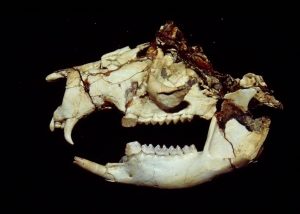
Researchers believe the discovery of a new genus and two new species of extinct non-hopping kangaroos could shed light on the ancestry of all kangaroos and wallabies living today.
University of Queensland researcher Kaylene Butler, of the School of Earth Sciences, said the new kangaroo species were discovered in ancient fossil deposits at the Riversleigh World Heritage Area in north-western Queensland.
“They lived around 15 to 23 million years ago and were the size of very small wallabies or pademelons,” she said.
“They moved on all fours, scurrying across a densely forested landscape quite different from the dry outback we see in western Queensland today.
“It appears that our new species were direct competitors with a second group of kangaroos at Riversleigh, the even weirder balbarid or fanged kangaroos.
“It seems likely that the fanged cousins were out-competed by our new species and their descendants.”
The newly discovered species may have been better adapted to the environmental change from rainforest to more open forest and woodland.
Ms Butler said the new genus (taxonomic rank), and two new species within the genus were identified when skulls and teeth were compared with those of known species.
The new genus is named Cookeroo, in honour of Queensland Museum researcher Dr Bernard Cooke, who led much of the research program focused on the evolution of Riversleigh’s ancient kangaroos.
The two new species within the genus are Cookeroo bulwidarri, which lived about 23 million years ago, and Cookeroo hortusensis, which lived 18 to 20 million years ago.
Bulwidarri means “white” in the Aboriginal Waanyi language, and is named for the Riversleigh White Hunter Site where specimens were found.
Hortusensis is Latin for “belonging to the garden”, in reference to Neville’s Garden Site at Riversleigh.
Ms Butler worked on fossil material as part of her PhD research supervised by former UQ Robert Day Fellow Dr Kenny Travouillon, now of the Western Australian Museum, and UQ’s Dr Gilbert Price.
Riversleigh research leaders Professors Michael Archer and Suzanne Hand, of the University of New South Wales, contributed to the work.
The research is published in the Journal of Vertebrate Paleontology.
Reference:
Kaylene Butler et al. , a new genus of fossil kangaroo (Marsupialia, Macropodidae) from the Oligo-Miocene of Riversleigh, northwestern Queensland, Australia , Journal of Vertebrate Paleontology (2016). DOI: 10.1080/02724634.2016.1083029
Note: The above post is reprinted from materials provided by University of Queensland.










